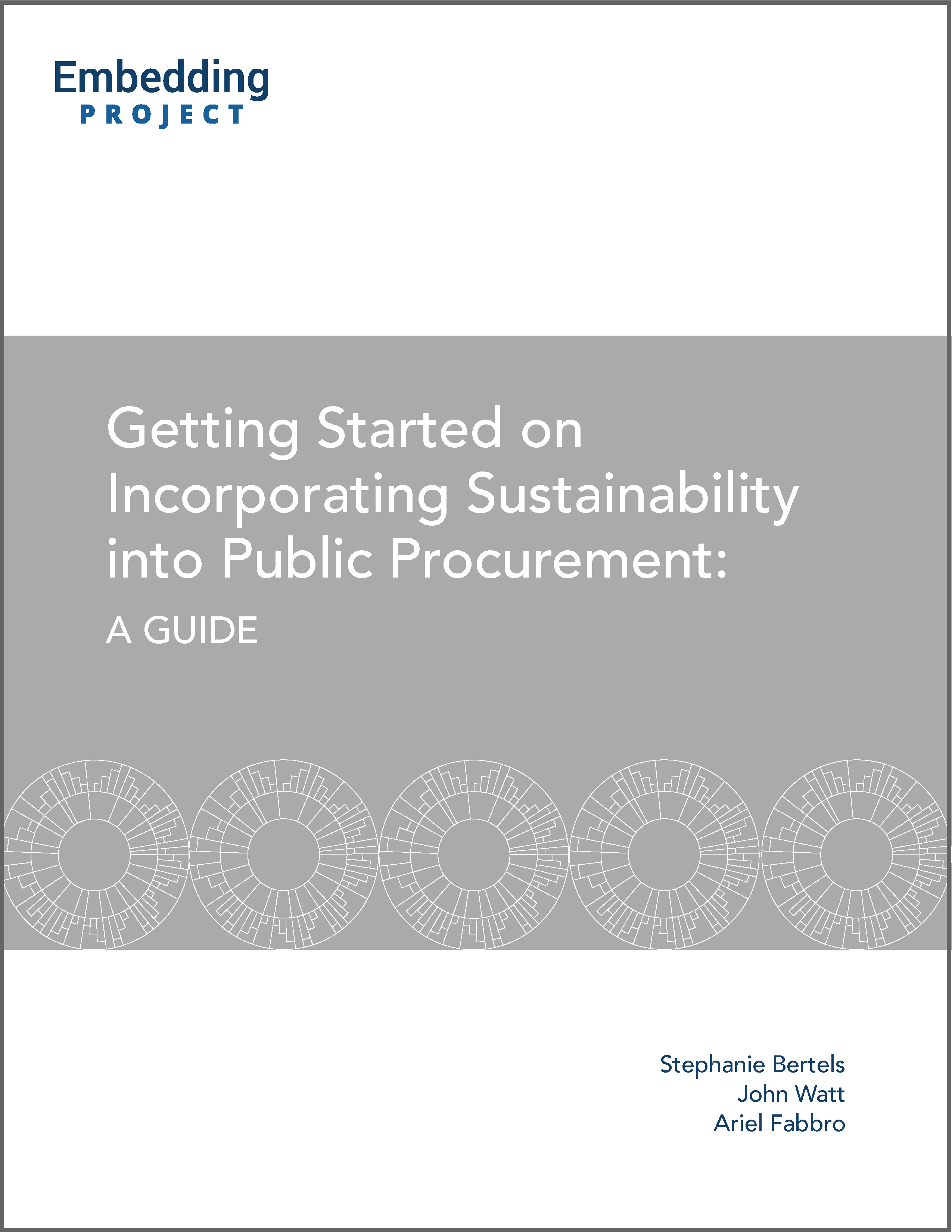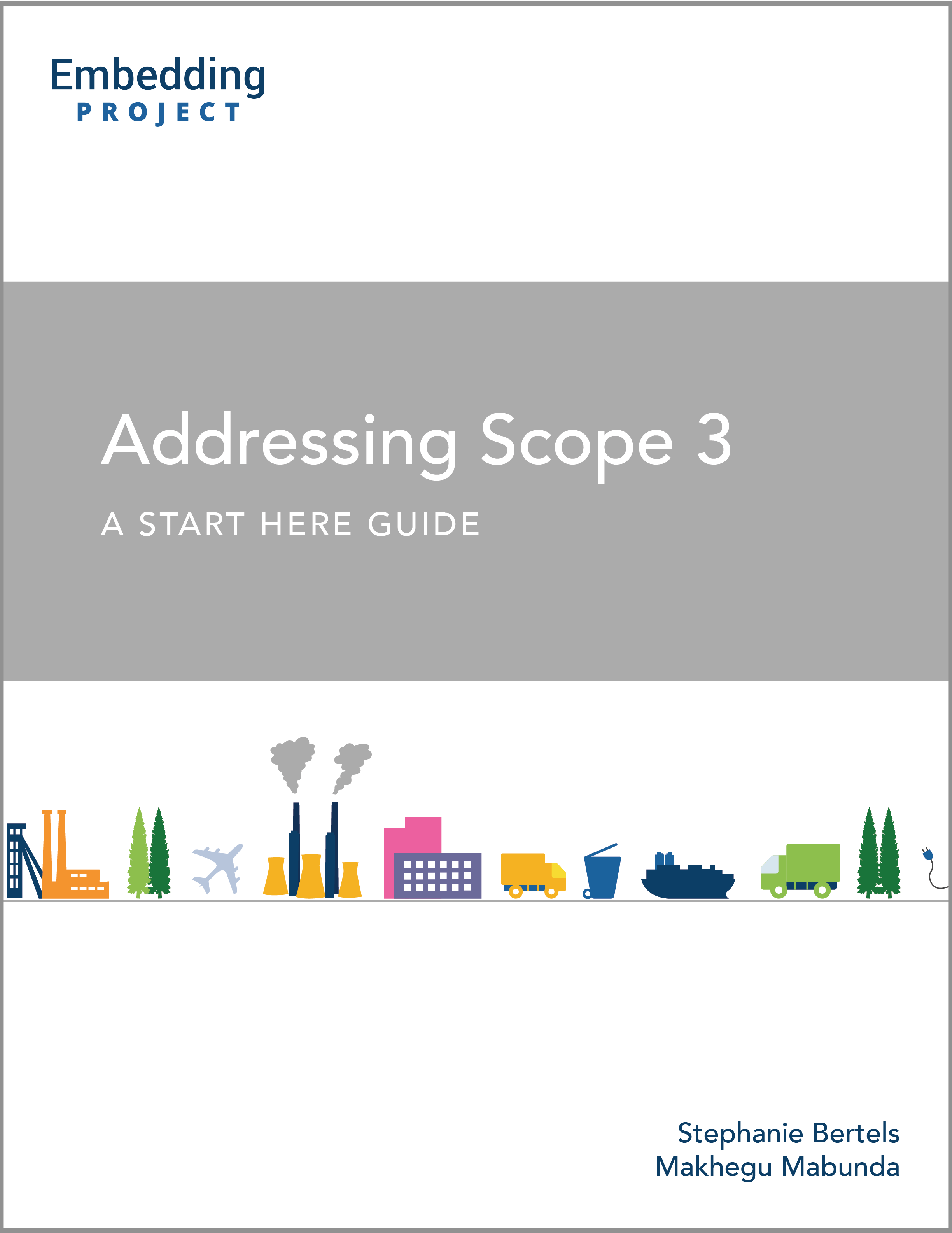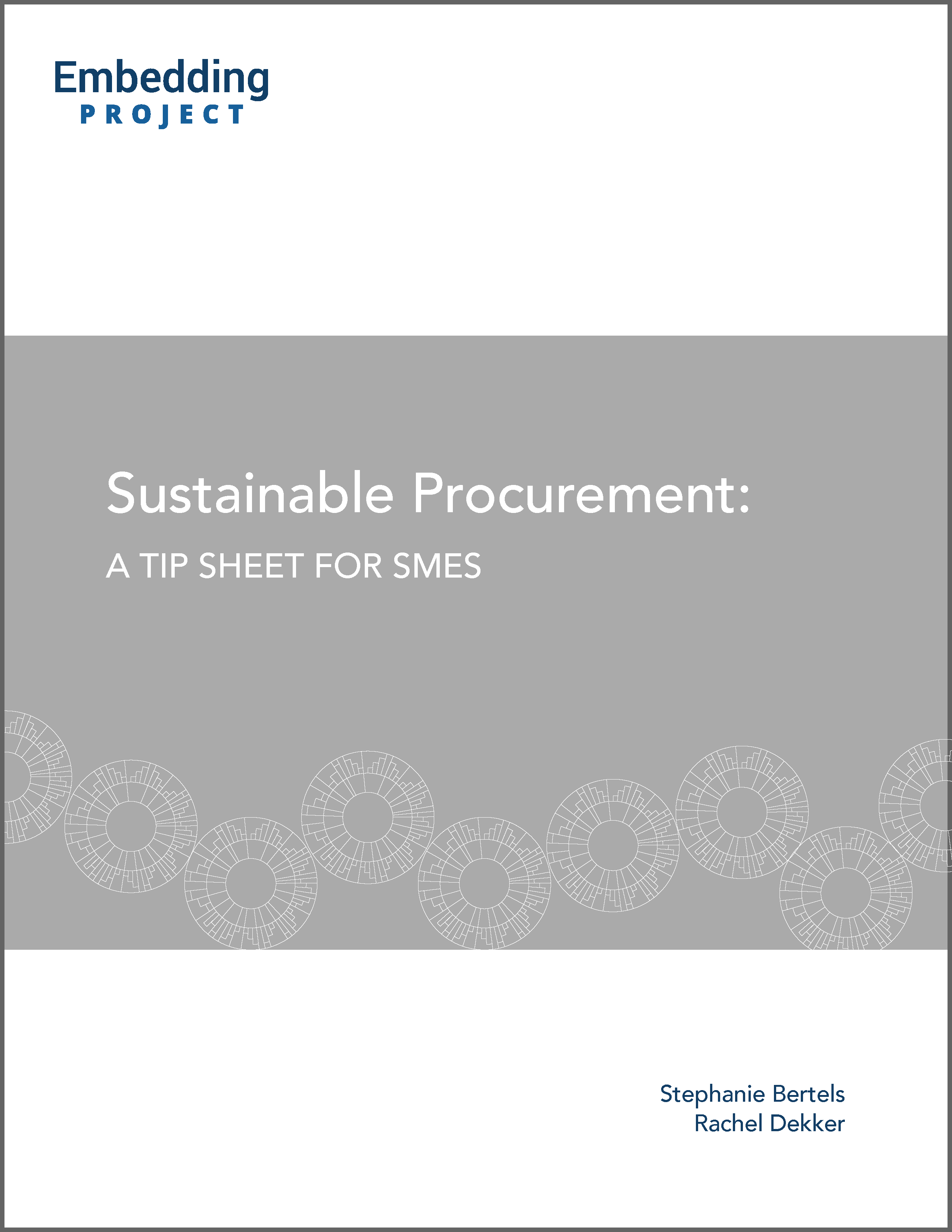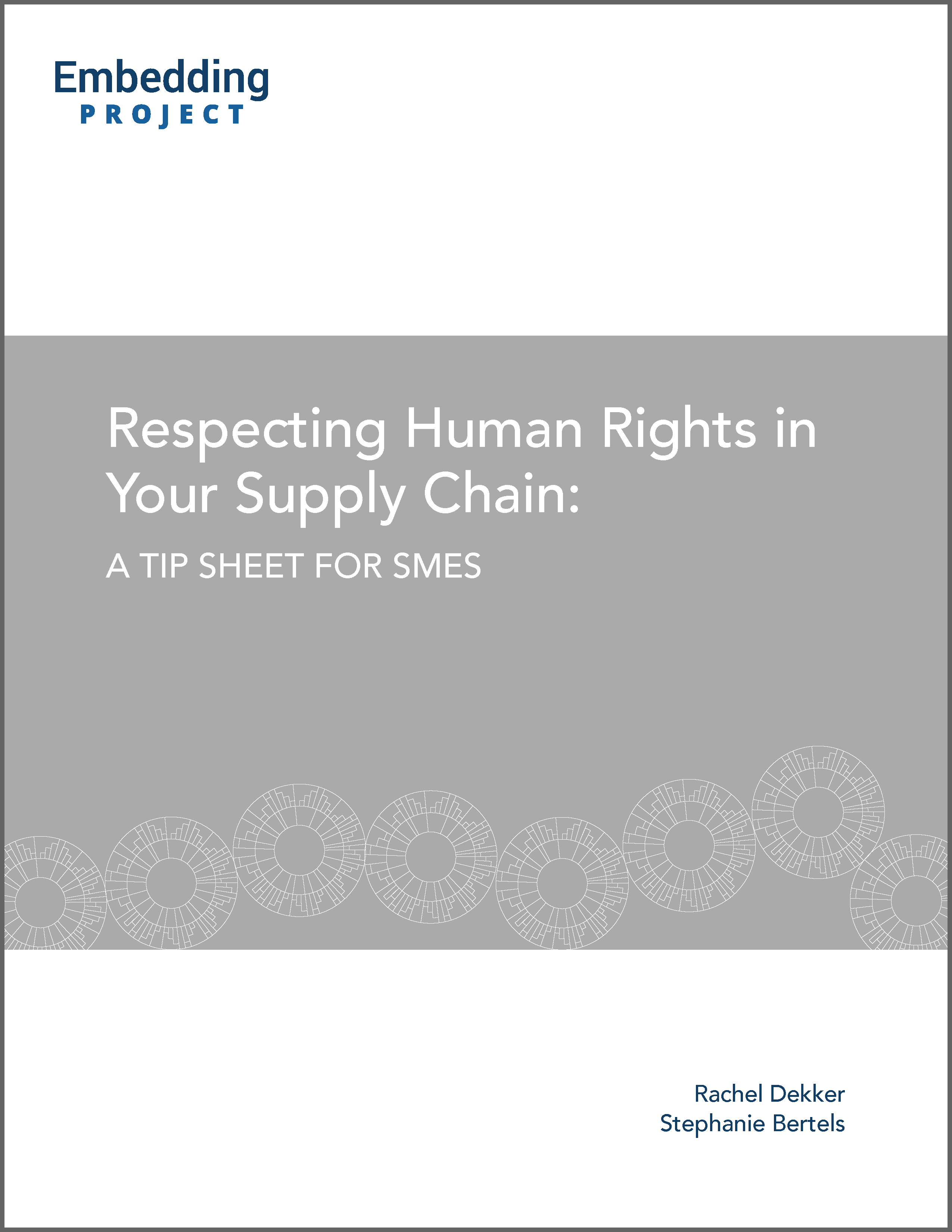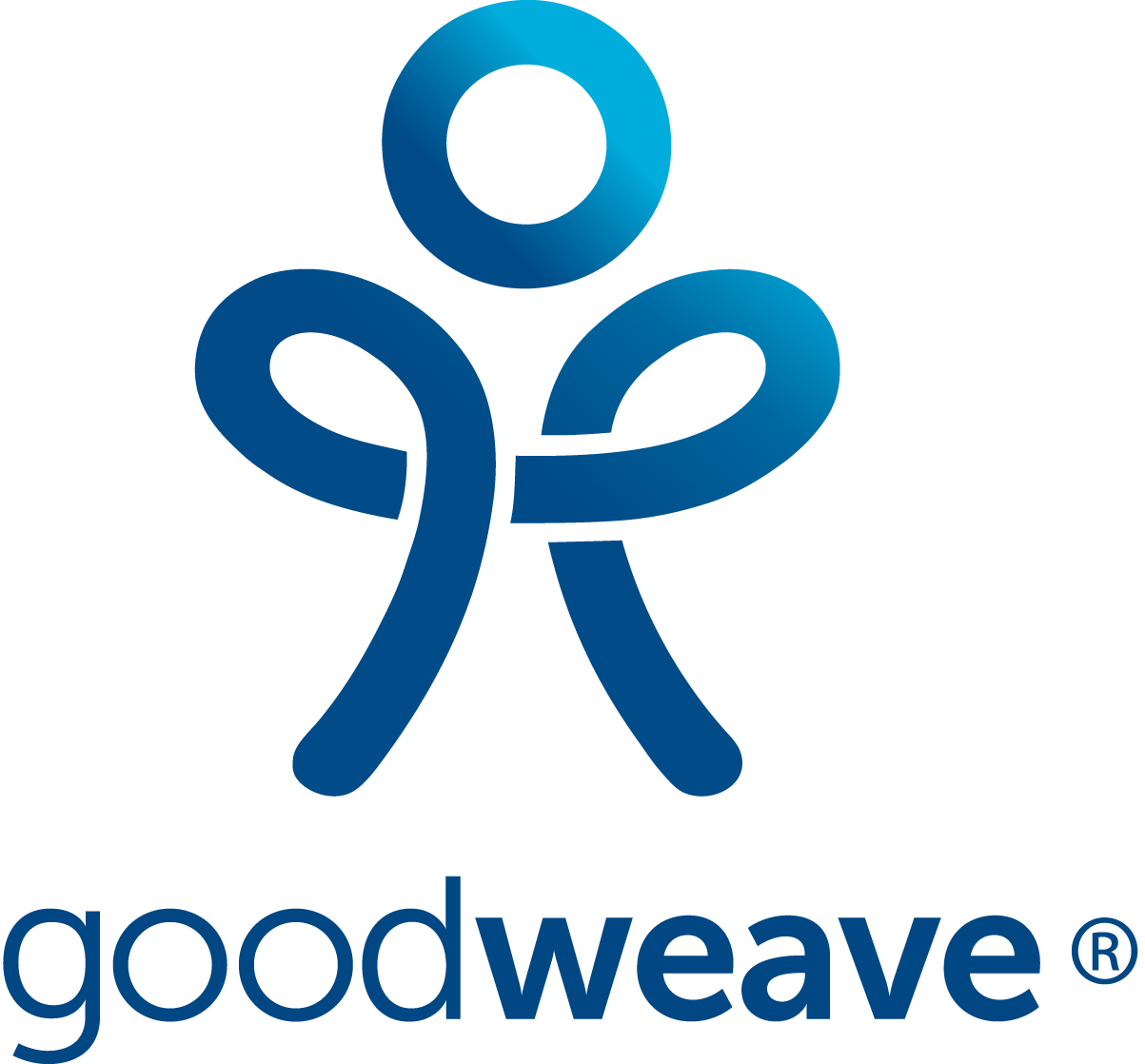Procure and Supply
Description
These resources will help you to integrate sustainability considerations into procurement and supply chain management through supplier engagement, coordination, and oversight, as well as by using your influence to convene and identifying opportunities for value chain collaboration.
Share this Practice on:LinkedIn
Resources
Sustainable Procurement
Sustainable Procurement Wheel
Our Sustainable Procurement Wheel helps companies to embed sustainability across their procurement and supply chain practices.
Based on research with leading companies, we have identified key practices and curated a selection of the most relevant resources and tools to help you implement them. The inner wheel follows the procurement lifecycle and the outer wheel looks at broader practices supporting change.
Getting Started on Incorporating Sustainability into Public Procurement
Public sector organisations have an opportunity, and an obligation, to ensure that the goods and services they buy align with their environmental and social commitments. This guide helps public procurement professionals to integrate sustainability considerations into public procurement processes and to improve the sustainability outcomes of their buying decisions.
Addressing Scope 3: A Start Here Guide
A guide for leaders of companies of all sizes to understand the basics of Scope 3 emissions and how companies should begin to take credible action. The guidance is anchored in the real-world experience of companies that are already navigating this journey.
Collaborating for Value Chain Decarbonisation
With the urgent need to reduce global emissions, rapid decarbonisation of our economy is essential, and the key is collaboration across the value chain. Our new guide provides practical advice and examples to help companies support their supply chain partners to decarbonise.
You'll find advice on how companies are prompting, influencing, supporting, and investing in their value chain and resources and ideas for how to support six key decarbonisation pathways: renewable energy adoption; energy efficiency and conservation; logistics; materials stewardship and waste; lower-impact agriculture and land-use; and carbon removal.
Sustainable Procurement: A Tip Sheet for SMEs
Companies are recognizing that the goods and services they buy contribute to their environmental and social footprint, often quite significantly. This tip sheet focuses on helping you to improve the sustainability outcomes of your company’s buying decisions and improve the impact your company has on the environment and on communities.
Supply Chain Sustainability: A Practical Guide to Continuous Improvement
This guide from the UN Global Compact and BSR outlines practical steps that your company can take to achieve supply chain sustainability. This resource provides a wide array of introductory information to better acquaint you with sustainable procurement, such as developing the business case; establishing a vision and expectations for your supply chain; explaining the key aspects of engagement with suppliers; and determining roles and responsibilities. The step-based guide also includes helpful examples that highlight best practices.
Ethical and Sustainable Procurement
Ethical and responsible procurement has become an environmental, economic, and reputational imperative, and yet organizations continue to face broad and significant challenges when translating awareness to action. This report from the Chartered Institute of Purchasing Supplies (CIPS) was created to address that gap. The report includes key concepts and provides practical guidance on the procurement cycle, including identifying vulnerability and risk, evaluating and shortlisting suppliers, and updating ethical procurement programs. It also contains useful practical information that will help you to communicate with suppliers from other regions in the world - particularly in areas with acute social and cultural differences.
Purchasing the Future You Want
This purchasing guide from HP provides a good template for how you can leverage sustainability procurement to advance your sustainability goals. It provides a summary of the relationship between sustainable procurement and meeting the Sustainable Development Goals; the aspirational model of the circular economy ecosystem; and the benefits HP has experienced in aligning its sustainability goals with supply chain impact.
Procurement specialists and sustainability change agents will particularly benefit from the guide’s evaluative criteria on designing products for circularity and on supplier transparency and performance. Although the content focuses on information technology, the principles and scope can be extended to apply in other procurement areas.
Extending ESG Best Practices Into the Supply Chain
This white paper from Avetta is a good starting point for junior change agents and procurement specialists to understand the growing importance of sustainable supply chains. It will help you to understand how investors are adjusting their focus to sustainable supply chains and why, and it explores emergent best practices from established leaders.
Step-by-Step Guide to Sustainable Supply Chain Management: A Practical Guide for Companies
This guide from the German Ministry for the Environment (BMUB) and the Federal Environmental Agency (UBA) can help you understand how to get started on sustainable supply chain management. Written with small- and medium-sized organisations in mind, it begins by introducing the advantages and challenges of sustainable supply chain management, as well as key topics. It also outlines a 7-step supply chain management process, which covers supply chain mapping, impact and risk identification, sustainability performance measures, internal process adaptation, supplier requirements, supplier evaluation, and reporting.
Value Chain Navigator
This set of online tools from Economist Impact are based on data gathered through surveying 1,250 companies on their efforts to mitigate Scope 3 emissions. They will help you benchmark your progress and take action on supply chain decarbonisation. There are four tools provided. The Research Findings page presents a series of key statistics and infographics giving a snapshot of how corporations are managing value chain emissions. The Self-Assessment tool helps you compare your performance on Scope 3 emissions against peers based on your industry, size, and region. It also recommends a customised action plan based on your business context. The Trend Tracker shows how much different scope 3 related topics have been discussed in the news. Lastly, the Scope for Change Spotlight video series highlights examples of value chain decarbonisation. These tools will be most useful to supply chain management and sustainability teams.
2024 State of Supply Chain Sustainability Report
This annual report from MIT and the Council of Supply Chain Management Professionals (CSCMP) can help you understand some of the current overarching trends and challenges in supply chain sustainability. Chronicling the evolution of supply chain sustainability over time, this 4th edition examines how crises have impacted supply chain sustainability initiatives and shows that companies are not providing the necessary resources to meet their supply chain sustainability goals. It looks at the growing pressures companies face on sustainability (investor and customer pressures in the US, regulatory pressures in Europe), and explains why measuring Scope 3 emissions remains a a key challenge. The report also shows that moving beyond aggregate methods (such as spend-based measurement) is essential and can be done with the support of emerging technology. These insights will be most useful to supply chain management and sustainability practitioners.
Building a circular supply chain: Achieving resilient operations with the circular economy
This resource from the Ellen MacArthur Foundation and Circular Supply Chain Network can help you understand how to transition supply chains from linear to circular. It features a white paper explaining how circular economy and supply chain management fields are connected and the role of supply chain professionals in operationalising circular economy initiatives. It includes a framework outlining nine focus areas for transitioning to circular supply chain and provides recommended actions and examples of companies overcoming key challenges. This paper is supported by a fact sheet that summarises the nine focus areas. These resources will be most useful to supply chain and sustainability teams.
Forest Declaration Dashboard
This data dashboard was created by the Forest Declaration Assessment and Systems Change Lab. It tracks the progress of countries on their commitments to end deforestation by 2030, which were made at COP26 in 2021 under the Glasgow Leaders’ Declaration on Forests and Land Use. The dashboard showcases progress on the six articles outlined in the declaration, including ecosystems, trade, livelihoods, agriculture, increasing finance, and aligning finance. For each article, the dashboard provides a summary of collective progress revealing that, in all cases, it is insufficient. The tool also allows users to explore progress on the indicators at a country level. This tool may be particularly useful to procurement and supply chain professionals assessing sourcing regions or sustainability professionals monitoring policy and financing developments around deforestation.
Human Rights in Supply Chains
Respecting Human Rights in Your Supply Chain: A Tip Sheet for SMEs
Every company, including a small or mid-sized enterprise (SME), has an obligation to respect human rights. This includes when you are buying goods and services. This guide explains how to assess possible human rights impacts in your supply chain and steps your company can take to prevent or mitigate them.
Commercial Contracts and Sourcing
This brief from Re:Structure Lab can help you to better understand how irresponsible purchasing practices are key drivers of forced labour in global supply chains. The brief explains how contracts and sourcing practices can change to promote equitable labour practices and protect supply chain workers from exploitation. It also highlights sourcing tools and agreements that promote decent work and explains the far-reaching reforms required to enable workers to hold business accountable for the terms and conditions within their contracts.
Tackling Modern Slavery in Supply Chains
Slavery exists in all stages of procurement, and as supply chains grow and become more complex, it becomes increasingly challenging to ensure freedom, fairness, and safety in the workplace. This resource will help those who want concrete guidance on how to reduce or eliminate the risk of modern slavery occurring in their supply chains. This guide explores effective standards, risk assessments, audits, corrective measures, and practical advice for engaging with suppliers, as well as a comprehensive collection of relevant tools.
Best Practice Series to Eliminate Child Labor in Global Supply Chains
GoodWeave is a team of business-minded social change experts and advocates who are dedicated to ending child labor, forced labor, and bonded labor in global supply chains. Their platform and resources will help you to better understand the issue of child labor in global supply chains and to take meaningful, regimented action that addresses the root causes of child labor. We especially recommend their Best Practice Briefs, which will help you to address effective standard setting; perform inspection and monitoring; map out your deep supply chain; engage in effective remediation; and prevent future abuses.
Other Resources
The Supply Chain Solutions Center
Launched by the Environmental Defense Fund, the Supply Chain Solutions Center is a “crowdsourced” knowledge resource hub. The library’s current focus is on agriculture, energy, chemicals, waste, forests, and freight, and provides sustainability resources, best practices, case studies, reports, executive interviews, strategy templates, webcasts, and news that will support you in learning about these issues, assessing risk, setting goals, measuring, and reporting. The Solutions Center also brings together sustainability and supply chain professionals, creating a space where platform users can connect and collaborate with other experts.
Procuring a Regenerative Economy: The Critical Role of Sourcing in Generating The Future We Want
Written specifically for Chief Procurement Officers and other sourcing professionals, this paper from EcoVadis and Volans can help you to understand the action needed to enable and support a regenerative economy through conscientious procurement. This paper explains the urgent need for a shift towards regenerative procurement, and identifies leading-edge sustainability-related terminology. It also provides case studies of emergent examples of regenerative approaches to procurement.
Responsible Minerals Assurance Process: Environmental, Social & Governance (ESG) Standard for Mineral Supply Chains
Developed by the Responsible Minerals Initiative (RMI), this resource was created to improve traceability and responsibility along the mineral supply chain. The resource will help mineral supply companies to address environmental, social, OH&S standards, and governance concerns, as well as to navigate and integrate existing relevant frameworks. The standard has been benchmarked against - and is consistent with - the RMI’s Risk Readiness Assessment and the Responsible Business Alliance's (RBA) Validated Assessment Process (VAP), as well as nineteen other prominent international ESG standards.
Circular Innovation Council: Circular Procurement
This platform was created by the Circular Innovation Council to support Canada’s collective understanding of the circular economy and how purchasing advances it. It showcases a broad range of resources that may be especially helpful for sustainability practitioners and leaders working in Canada, such as case studies from a variety of sectors and industries; guidance and best practices; policies and frameworks; and purchasing tools.
Although created for the Canadian context, many of the learning materials here provide lessons and insights that are equally applicable elsewhere.
Share this Practice on:LinkedIn

